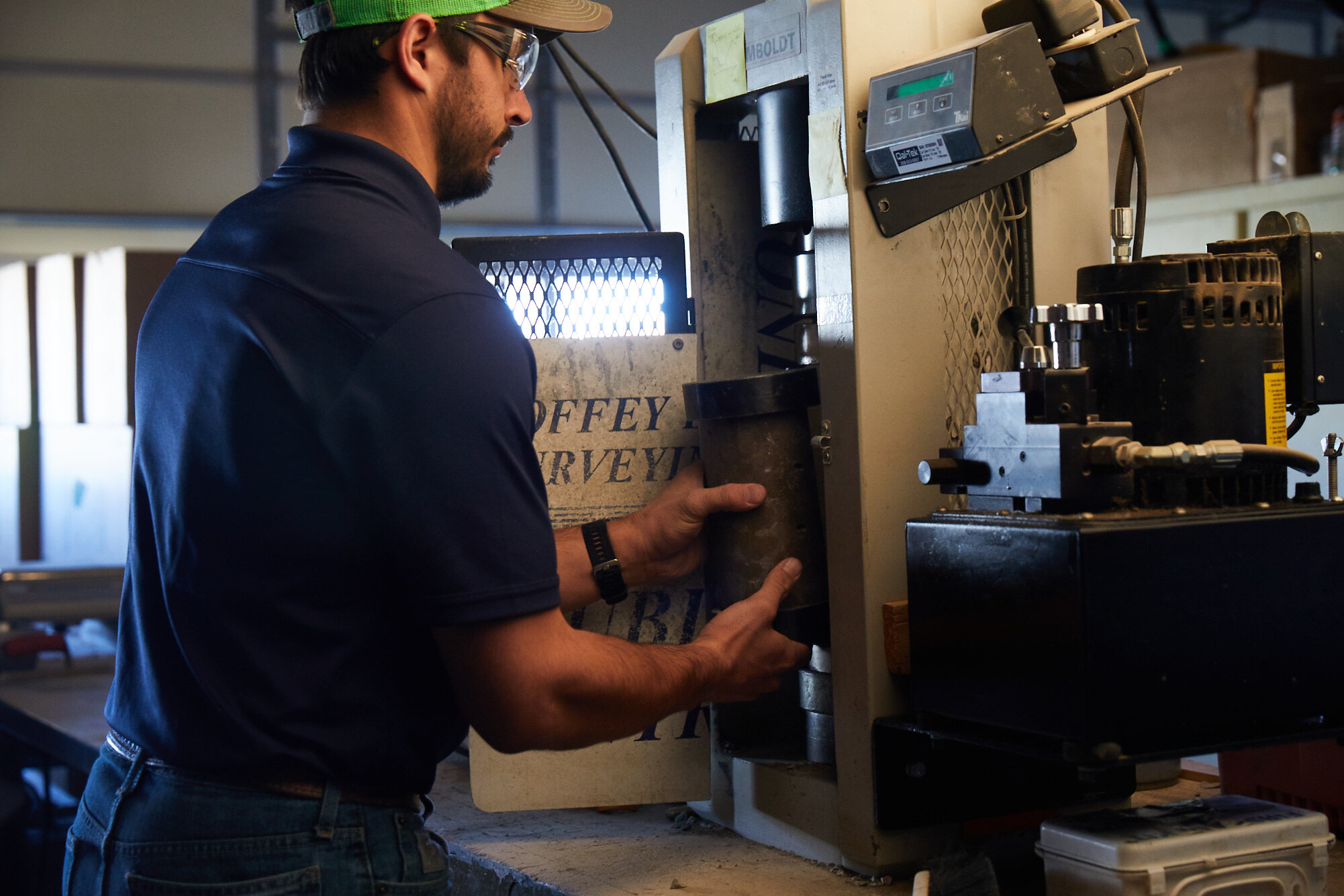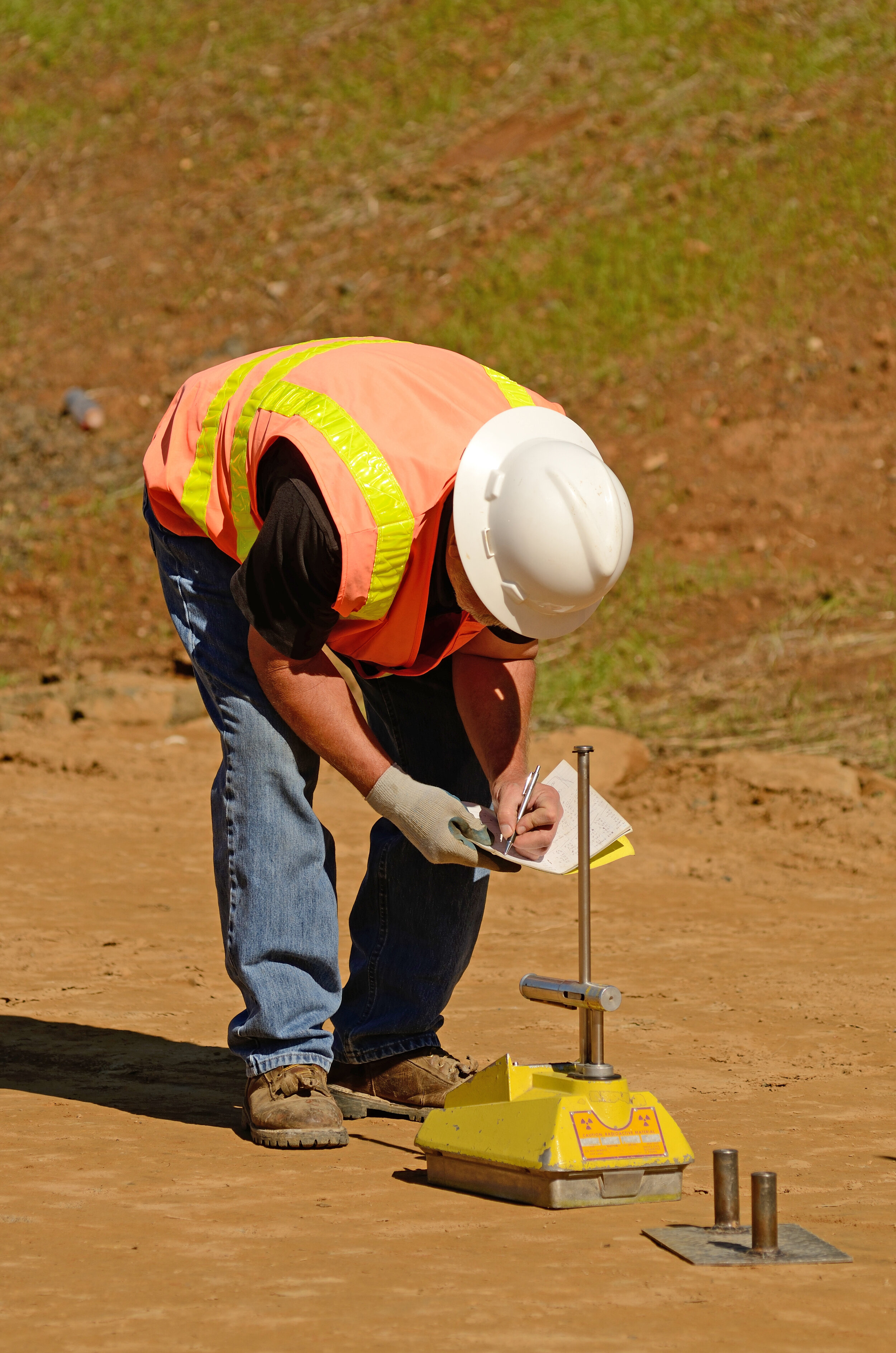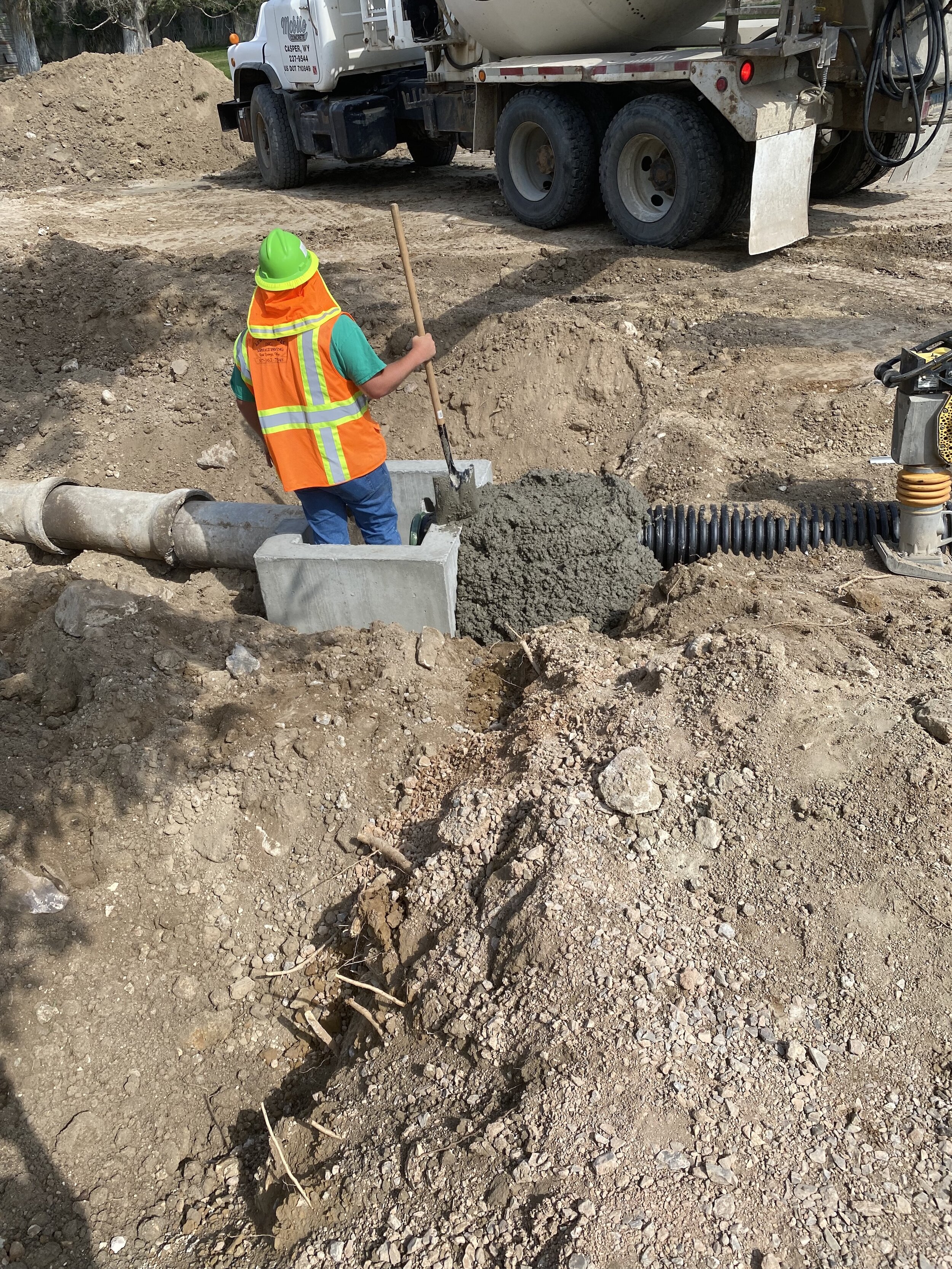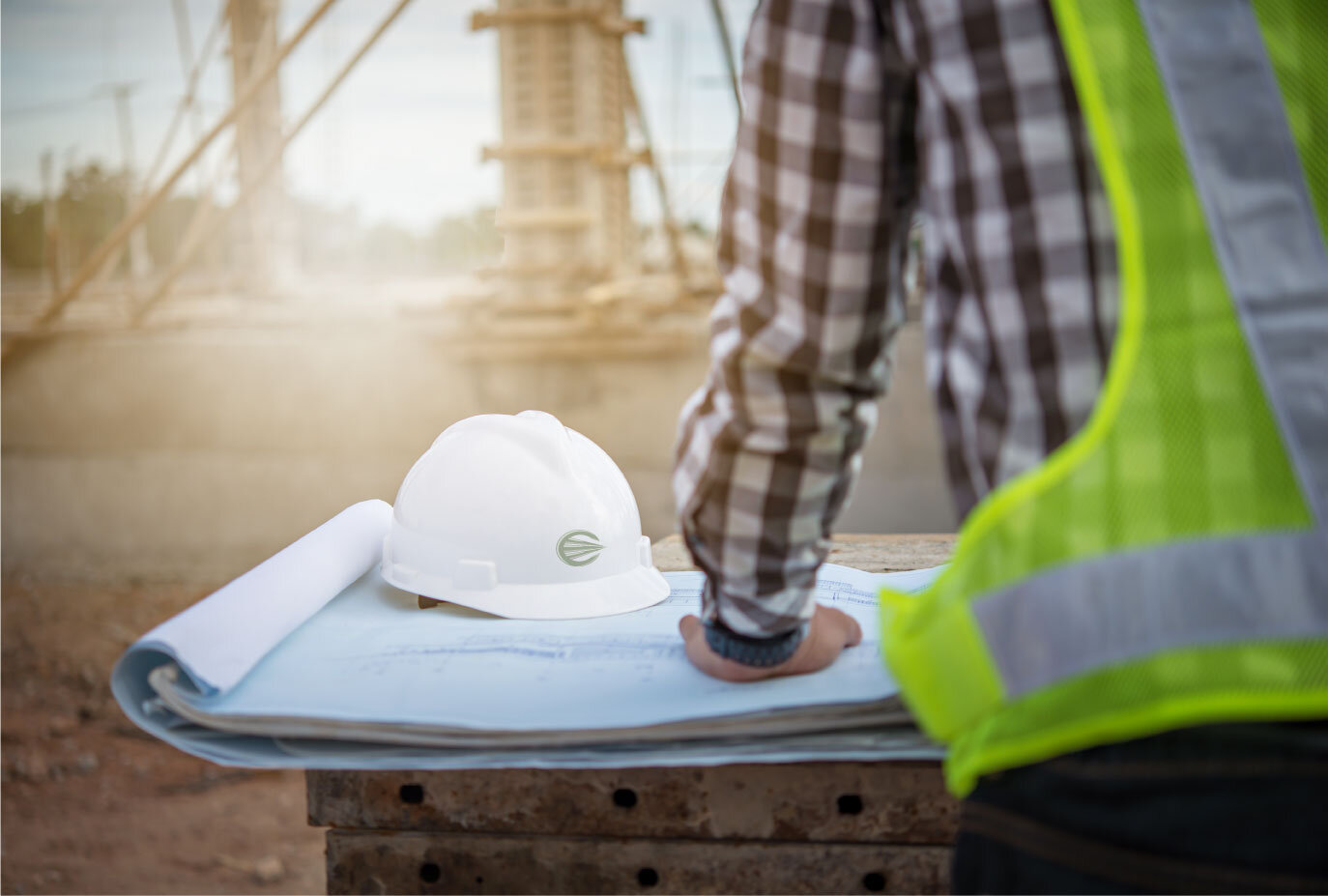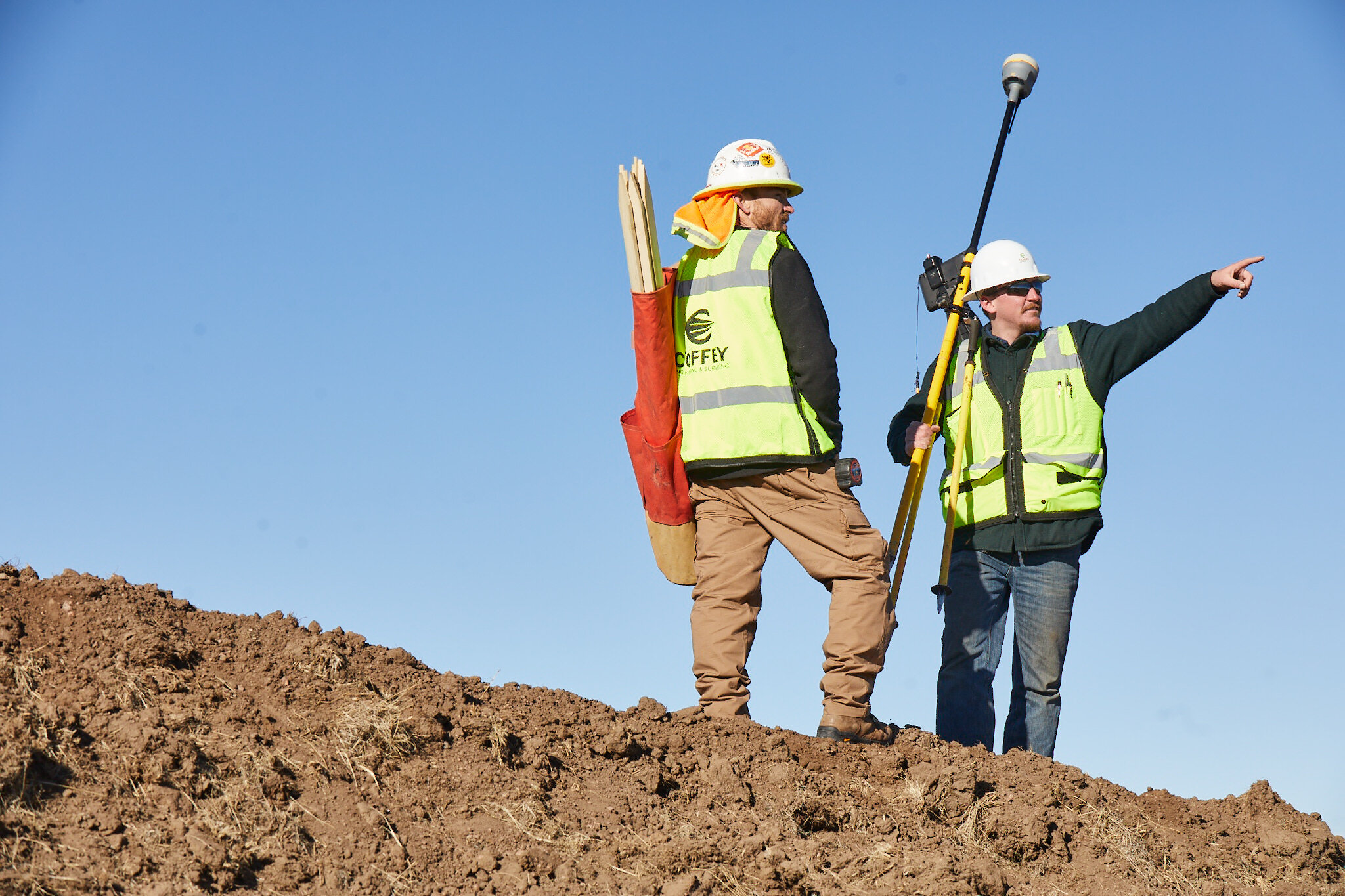The Importance of Materials Testing
by Julia Ribeiro (Coffey Communications) and Dru Burr (Coffey Engineer)
Materials testing is a regulatory requirement for most massive projects amongst the country and is considered to be a worthwhile investment. Complications from not building with the right material could cause financial setbacks, project complications, and in some cases, more serious consequences like infrastructure malfunction or collapse.
What is Material Testing?
Steel building structure for building construction.
Materials Testing, also known as Construction Materials Testing (CMT), is a vital safety procedure performed prior to installing materials into a structure. CMT is a form of quality control testing that occurs both on-site and in a laboratory. This process aims to test materials for compaction, strength and stability, and therefore determine the viability of materials in a particular project.
The practice of materials testing started to develop shortly after the Civil War, as the industrial revolution began expanding within the United States. The practice grew amongst the civil engineering community through the necessity of adequately testing materials before construction and protecting against building explosions and collapses. Still, it wasn't until Norwegian engineer Tinius Olsen invented a device named and patented as the "Little Giant'' in the 1880s that materials testing grew into how it is known today.
Before the Little Giant was invented, all materials testing required many separate devices, each with one sole function. Olsen's machine was revolutionary because it could perform tensile, transverse and compression tests within one machine. Additionally, the machine was simple to operate, inexpensive and provided greater precision.
Application of Materials Testing
The application of materials testing incorporates a broad spectrum of materials, as almost any raw material may have its composition tested for density, strength and stability.
Suppose a fitness brand is coming out with a weighted jump rope. The rope is composed of rubber, steel and foam. Testing materials is a necessary quality control procedure for ensuring that the foam-covered handle will not rub and stain hands or that the rubber cord will not break after a certain amount of jumps.
Materials testing is a technique present in all consumer goods and is a provider for safety and trust.
Types of Materials Testing
Materials Testing may be divided into two categories, on-site and in-laboratory testings. On-site testing is composed of visual assessments and non-destructive testing. In contrast, laboratory testing is used on an as-needed basis and evaluates materials' physical and mechanical composition through destructive testing.
On-site testing usually examines:
Soil density for required compaction levels
The post-tension of pre-placed concrete and masonry
Concrete slump, air content, unit weight and temperature
Visual assessment of welded and bolted connections
Accurate asphalt pavement installment
In-laboratory testing usually examines:
The strength and compressibility of soils that will uphold structures and pavements
Materials strength testing
Material resistance against compressive strength
Steel and concrete reinforcement testing
Benefits of Materials Testing with Coffey
Coffey Engineer, Dru Burr conducting tests in Coffey’s materials testing lab.
Coffey Engineer, Dru Burr testing the compressive strength of a concrete cylinder in Coffey’s lab.
Any client who is building a structure or road for public use within a jurisdiction must have material testing on certain project elements. Typically, soil and concrete testing are involved in all projects. Coffey's materials testing department comprises soil identification, soil compaction, concrete quality, concrete reinforcement, high strength steel bolting and welding.
Coffey stands out from competitors in material testing because we do not rely only on the compaction numbers to determine whether the soil is compacted; we verify that the contractor's means and methods are correct before considering what the numbers are saying. If the procedures are correct, the numbers should follow. If they do not line up, there may be an error that was not the construction team's fault.
Coffey’s Advanced Technology
Coffey also has a unique instrument called a nuclear density gauge. A nuclear density gauge measures photons of radioactivity sources that travel through soil. Then, through a complicated equation, the gauge converts the measured radioactivity to a density in the units of pounds per cubic feet (PCF). Therefore, a nuclear density gauge measures the moisture and density of soils, aggregates, cement and asphalt concrete.
Density of soil is measured through a variety of methods, however the industry primarily relies on two methods which are: 1) using a sand cone (see figure 1), and 2) using the nuclear density gauge (see figure 2) previously mentioned.
Although both methods produce accurate results, the nuclear density gauge produces a measurement in 5 minutes and the sand cone method takes a minimum of an hour to produce a result.
Although over 70 years old, Coffey Engineering & Surveying is a team of individuals continually looking for new ways to improve. Using a nuclear density gauge that is 20 times faster than its more widely-used sand cone alternative is one step forward.
(1) Checking for soil density using sand cone method.
(2) Field engineer using a Nuclear Density Gauge to check for soil density.
Browse Articles
About Dru
Dru has a wide range of experience within the materials testing field, leading services such as soil identification, soil compaction, concrete quality, concrete reinforcement, high strength steel bolting and welding.
He has tested materials for a range of clients, from a private dental surgery center wishing to expand capacity, to the National Guard Center building a new training facility for soldiers.
Follow Coffey
Thank you for reading our article written by Coffey Engineering & Surveying Communications Specialists Julia Ribeiro, and Coffey Engineer Dru Burr. If you are interested in the application of materials testing for your project or have an inquiry about other civil engineering and land surveying services, we invite you to contact us by email or phone.




